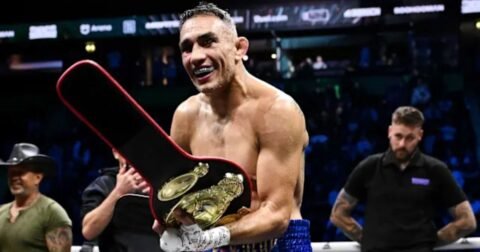Many prospects now enter MMA gyms while still in school. They do not start as pure strikers or grapplers, then bolt on the rest later. From the beginning, they rotate between pads, wrestling drills and grappling rounds in one session.
Coaches treat them as problem solvers. The same scramble can be repeated again and again to learn every exit and counter, not just to move faster.
On regional cards, this is easy to spot. Young fighters frame off the fence, pivot out instead of backing straight up and shoot only on a clean opening. Their game flows together because it was built as MMA from day one, not patched together right before a pro debut.
Decision making beyond the cage
Fight IQ is not built by chaos rounds alone. Many serious gyms now mix video sessions, scenario drilling and even talk about probability in simple terms. A prospect learns when a risky exchange makes sense and when it is better to stall, clinch or change levels.
The same logic appears in how athletes relax outside the gym. Someone who studies risk in fights often treats betting and gaming more thoughtfully, too. A player who uses an Online Casino or a sportsbook with crypto options and live odds can approach it like a tactical round, not a mindless spin. That habit of measuring risk and reward in different environments can reinforce patience under pressure once the cage door closes again.
How gyms build complete prospects
Modern MMA training is no longer just hard sparring five times a week. Sessions are broken into blocks that cover specific roles a fighter needs on fight night. A typical structure for a growing prospect looks like this:
- Technical striking with focus on balance, footwork and defence, not only power.
- Wrestling entries and cage control, both offensive and defensive.
- Grappling rounds that start from bad positions, like mounted or stuck on the fence.
- Strength and conditioning blocks that mirror fight tempo, not random exhaustion.
Because of this structure, a young fighter knows where each drill fits on fight night. Sprawling in the third round feels like a replay of a tired drill, not a shock. Even recovery days get shaped intelligently with light drilling and mobility, so the body and mind do not swing between extremes.
Sparring that actually teaches
Old school gyms sometimes treated sparring as a test of toughness. That model still exists, but serious teams use sparring as a targeted tool. Intensity goes up and down depending on the camp, partner and goal of the round.
Many coaches refer to ideas similar to the classic boxing approach to unwritten sparring rules. Respect for partners, clear agreements on pace, and proper protection matter just as much in MMA. If that culture is strong, prospects can spar often, learn fast and stay healthy enough to fight regularly.
Good MMA sparring today often starts from specific spots. Rounds may begin with one athlete already stuck on the fence or flattened on half guard. The aim is not to “win the gym fight”, but to rehearse situations that appear again on regional shows and, later, in big promotions.
From regional hopeful to real contender
When a prospect finally signs for a larger promotion, the difference is obvious. Someone who grew up with structured MMA training does not panic after an early takedown or a cut. The athlete has already seen those situations hundreds of times in controlled settings.
Modern MMA training builds that confidence layer by layer. Technical depth, smart sparring, risk awareness and consistent habits outside the cage shape fighters who can handle bright lights without losing their identity. That mix is what turns a talented beginner into a real prospect and, for a few, into the kind of contender fans remember.







